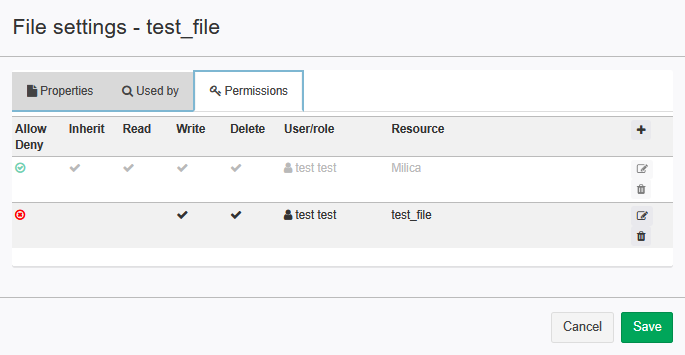Permissions
Permission is the property of whether an object is accessible for a certain type of action. The following tables show the Permission model in the TIS environment.
A permission states of | |
|---|---|
| A user or a role on which it takes its effect |
| An element in TIS it is applied on, for example, a TIS Table, or a Project |
| Read access, write access, etc. |
| specifies that the permission is granted or denied |
An Object states of | |
|---|---|
| Role (=1) or User (=2) |
| If it's a role, then the RoleId, if it's a user, then the UserGuid |
A Descriptor states of | |
|---|---|
| A Type of TIS-Element on which it takes its effect, for example, a node in the Dashboard-tree |
| The identifier of the specific descriptor element |
A permission has to be defined on the top most level.
For example, it has to be defined on a folder level, with enabled inheritance, so that it can be applied to the objects within the folder.
Inherited permission can be overwritten on lower level.
For example, user or role can be denied the "Write" permission for a specific table granted by inheritance, by adding a "Write" permission with "Deny" permission flag.
Inherited permissions are marked as “greyed out” in the lower level (e.g., on a file within a folder) and can’t be modified at this level:

